For many years (three, to be exact), a big part of our story was living full-time in our 30′ Airstream travel trailer. Living small still is a huge part of our early retirement story, but in 2019, we bought something that has changed the way that we live our lives.
We bought an 800 square foot solar home (sight unseen!) on just under 10 acres out in the middle of the Arizona desert.
Why? I wanted a little more space and a proper office. Courtney wanted more community and an opportunity to start growing some roots in a small town.
This house accomplished both of those needs!
We filmed our first look at the solar home on our YouTube channel. If you’re curious, have a watch.
What does “off-grid” mean? It means we have no utility hookup to the grid. No power lines. No city water. No sewer. We’re out here in the middle of the desert and we provide the vast majority of our resources ourselves – for a fraction of the cost (no monthly bills).
When living off-grid, there are three primary areas that need to be addressed in some way, shape or form:
- Electricity,
- Water, and
- Sewer (Septic)
We bought this home with all three of those areas addressed, though we drastically improved two of them for longer-term living.
The biggest benefits of our solar home include:
- installing solar provided federal tax credit of entire purchase
- nearly zero electricity costs with no utility grid tie
- renewable energy is just sweet
Our home runs on septic. But, that’s not really all that interesting. The more exciting components of our off-grid home are the solar energy system as well as our water filtration system. And, my brand new office.
Ready to take a look? Let’s go!
Our Off-Grid Solar System
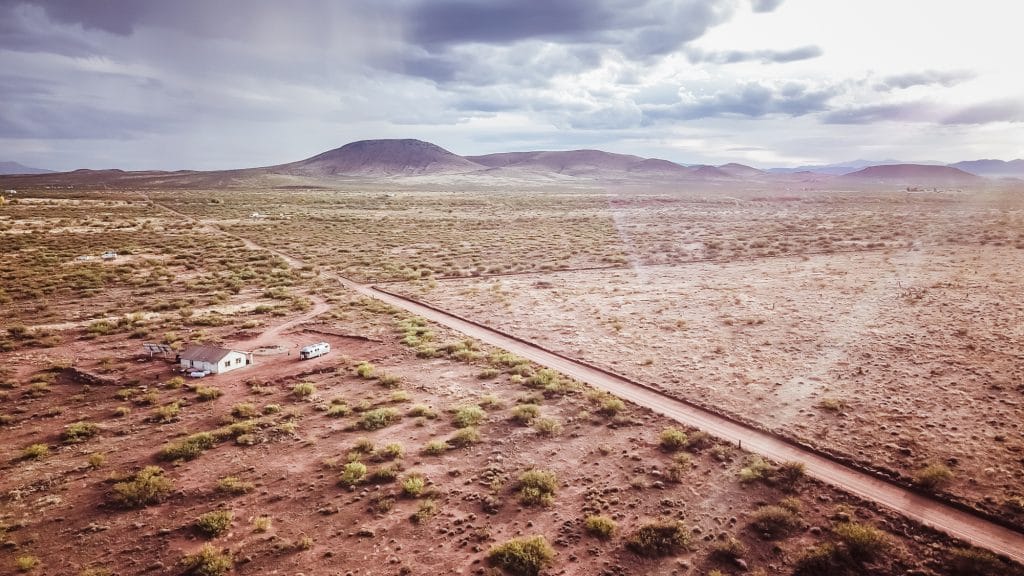
The bread and butter of most off-grid solar homes is electricity. The power, baby! Although our home did come with 320 watts of solar energy already installed, it wasn’t nearly enough for extended living.
We needed a more substantial renewable energy solution for full-time living.
By the way, we have a gas range (and fireplace) fed by a 500-pound propane tank behind our home. That amount of propane easily lasts us between two and three years of living in our off-grid home.
Residential solar energy systems aren’t cheap, but they are game-changers. Solar power systems save money in the long run and include a tax credit in the U.S. and, of course, it’s clean energy. We love not having an electric bill.
Our first order of business was to upgrade the solar system so we never have to worry about power as long as we’re here. That included more solar panels as well as battery storage.
With the help of my dad, we gutted the clumsy solar system that was already here when we bought the place and installed a brand new solar energy power system that, even on partly sunny days, generates much more power than we need.
During daylight hours, the system will draw power directly from the solar panel arrays (rather than going through the batteries and back-charging them). After the sun goes down, the system will automatically switch over to drawing power straight from our lithium battery bank.
It’s all automatic. We don’t need to lift a finger.
Here’s a breakdown of our solar components:
- 3700 watts of total solar
- 12 120 cell module battery storage (REC TwinPeak2 Mono)
- MidNite Solar surge protector (300 volts)
- OutBack Radian pre-wired Inverter/Charger (4000 watt)
- Simpliphi Lithium Phosphate 48v batteries (4) at 75Ah each
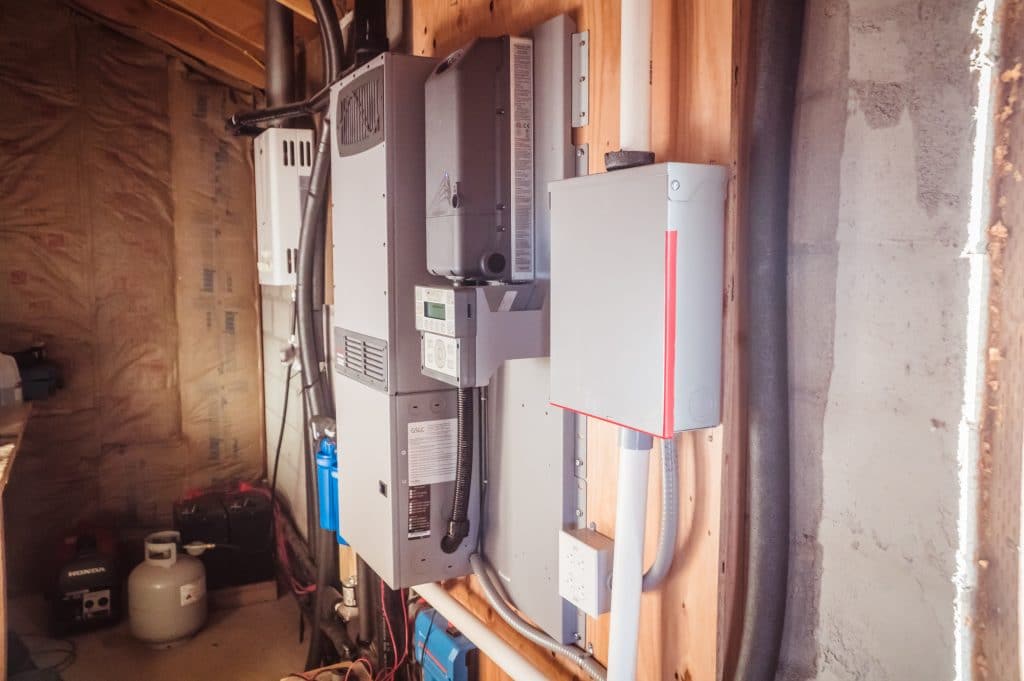
We purchased our entire solar system through Northern Arizona Wind & Sun (not sponsored) in Flagstaff, AZ. It was shipped freight using SAIA to a local sorting facility and we rented an enclosed U-Haul truck to carry the equipment to our property.
Instead of using our roof, we mounted all the solar panels on steel schedule-40 poles buried four feet into the ground and surrounded by a thick layer of cement. Those poles are extremely well supported.
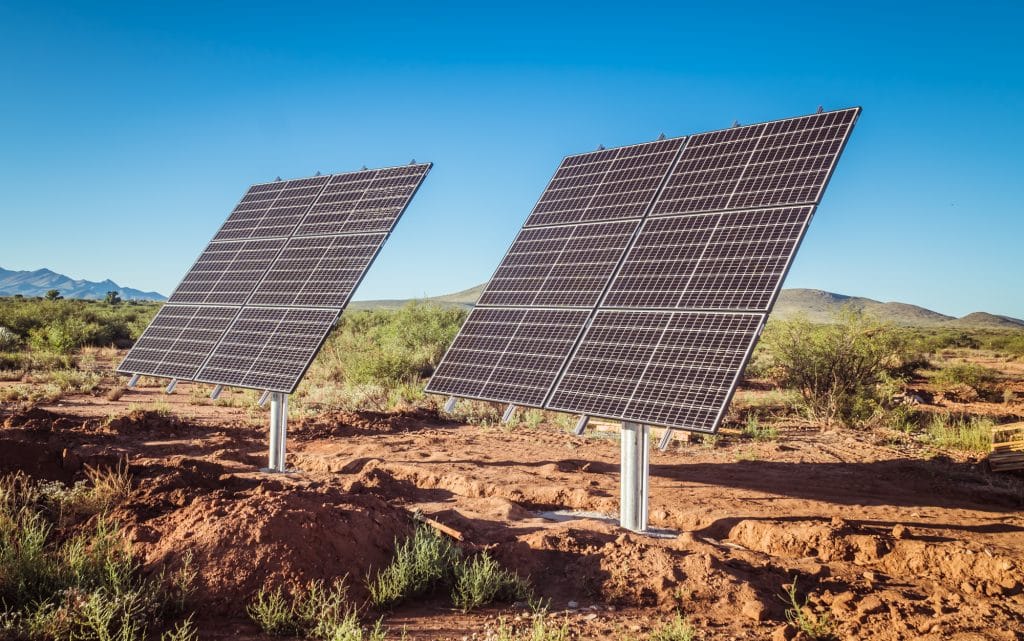
Check out our video of how our solar panel system was put together.
Here are a few of the most common questions we get about our system on our solar home:
Why ground-based solar panel poles instead of roof-mounted? We want the flexibility to rotate and tilt the solar panel arrays based on the time of year. This gives us the ability to maximize our solar power on cloudy days by manually pointing each solar array directly at the sun. It’s not an automated process, but adjustments are easy.
Have we ever run out of solar power? Not yet, and we’ve lived here for almost three years. With our fast-charging 48v lithium batteries, we have never run out of power – or even come close. On sunny days, which are typical in Arizona, we’re usually at a 100% state of charge by 8:30 or 9:00am and do not tend to drain the batteries during daylight hours.
How did you figure out how much solar energy to install? Before going solar, we used this handy solar load calculator for the basis of our estimate. We over-estimated in many areas to ensure we had enough solar power. A lot of this is an educated guess, and whenever possible, over-estimate on the solar calculator. As it turns out, we needed more solar panels than we thought, but fewer batteries.
Are you tied to the grid at all? We don’t have a gridtied solar power system. We’re 100% dependent on our solar panel arrays for our power, which is why we equipped our system with lithium batteries for when the sun goes down. Running power to the property is expensive and the local utility company offers little incentive to tie our solar system into the grid. And, we just like being off-grid.
Do you have air conditioning? There is no air conditioning or heat in this house. However, it’s extremely well insulated and even on the coldest nights (temperatures in the teens), it stays at about 60 degrees inside. It gets warm during hotter days, but with a couple of windows open, or even a portable air conditioning unit or swamp cooler running off of our solar system, it stays perfectly comfortable.
In the winter, we use our propane fireplace to heat the house, along with a small catalytic heater in my office to keep the other side of the house warm.
How much did your residential solar system cost? It was around $20,000. Purchased in 2019, we got to use the 30% tax credit to help reduce the financial damage. But, this is a one-time cost. We love not being tied to the grid and the lack of a monthly utility bill.
Our Water System
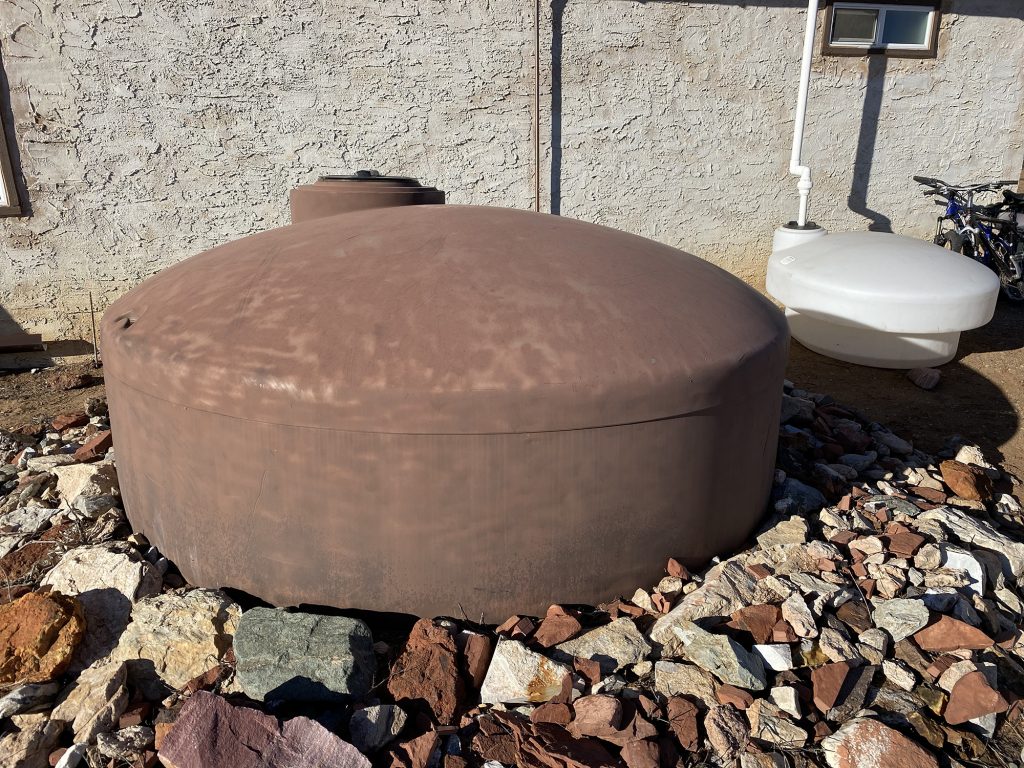
Our water system just got a major upgrade with a brand new well. But, it wasn’t always this easy to get water into our home. It used to be a bit of a chore.
But, that’s not entirely accurate. The system itself works great. Rather, it’s our water-holding capacity that’s the issue. In other words, I wish we had more water.
We have a 1,200-gallon fresh water holding tank behind the house that feeds our whole home with water.
Before getting our well, we got water in two ways:
- We called a local guy who fills up water tanks for people in the area with pure, crystal-clean well water; it costed us $100 for a complete fill when we first arrived
- Our rain catchment system provided free water whenever it rained, though it’s not nearly as clean
Our rain catchment system consists of gutters on the back of the house that attach to a PVC pipe that directs the flow of water downward into our separate 210-gallon rain catchment tank.
Here’s our gutter:
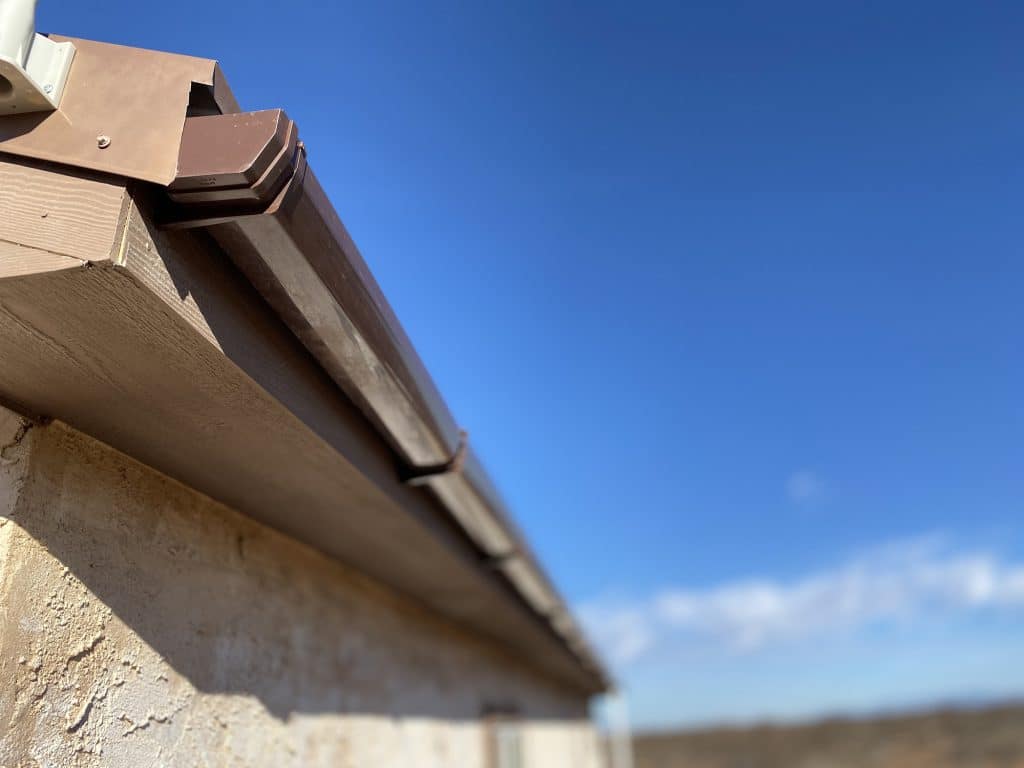
And, here is where the PVC downspout directs water from the gutter into our rain catchment tank:
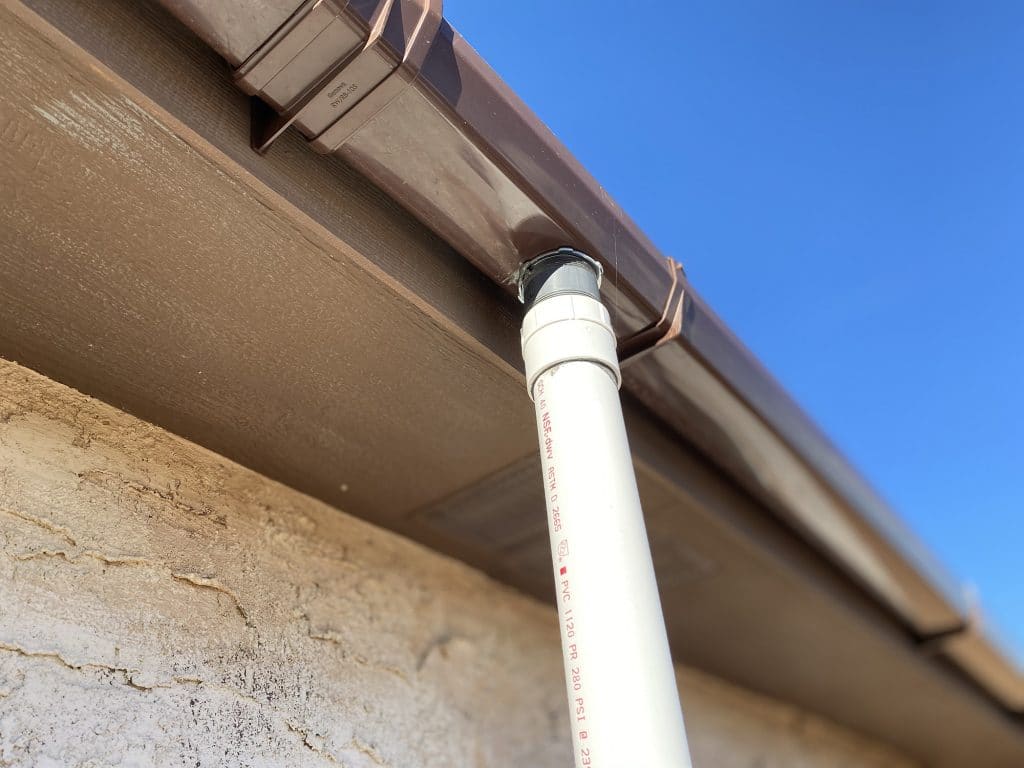
And in case you’re wondering, yes, rain catchment is legal in Arizona, though it may not be legal where you live.
After a rain, we let the water settle in the rain catchment tank to allow time for dust and other particles to sink to the bottom via the magic of gravity. Then, we use our water transfer pump to pump the water into our main water holding tank.
As an added precaution, we use a regular RV water filter to filter the rain catchment water before it hits our main water holding tank during the transfer process.
For the first 2.5 years of living here, this process works great, but it heavily depends on the amount of rain that we get. After a big rain, we will easily fill our rain catchment tank with water that’s ready to be used.
But today, our well has largely replaced our water catchment system. One of our latest projects in 2021 was to drill our well and run power to the well and a PVC line directly to our freshwater holding tank. Now, it’s easy to get virtually unlimited water into our home.
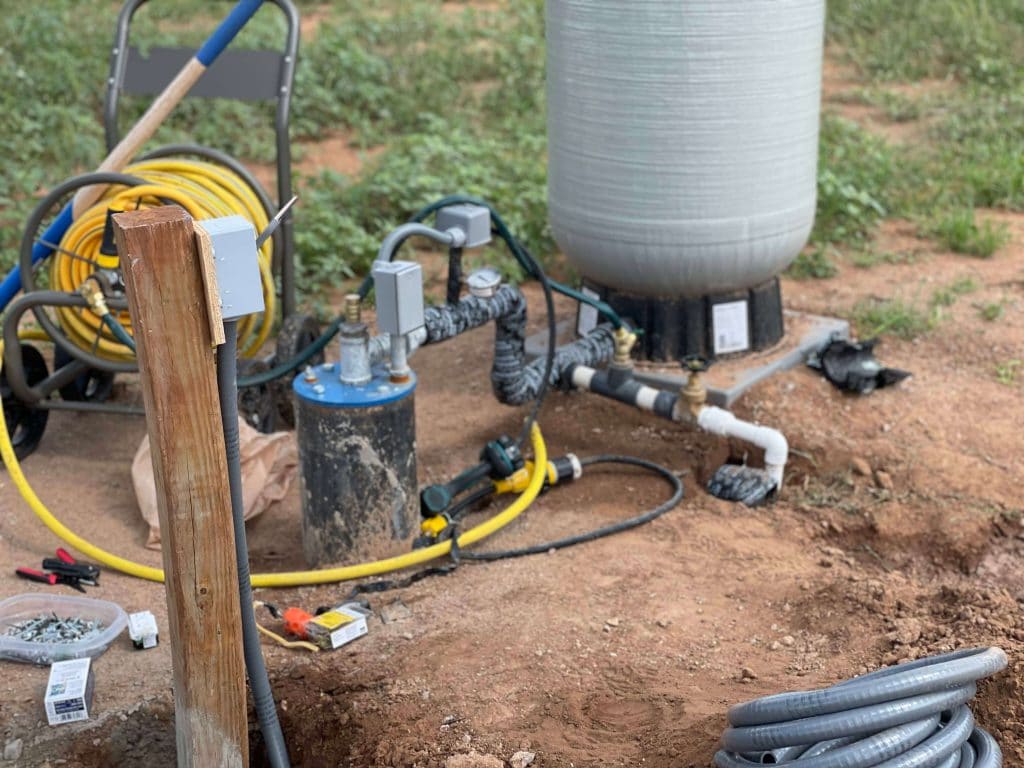
Our Water Filtration System
We’ve installed a multi-faceted water filtration system in our home to ensure that the water we use to wash dishes and take showers is clean and pure.
We put our drinking water through one more filtration process for a little additional assurance that the water is clean.
Here’s how it works.
Our 3-gallon-per-minute water pump brings the water from the holding tank into the house and immediately funnels it up and through a dual filtration process, pictured below.
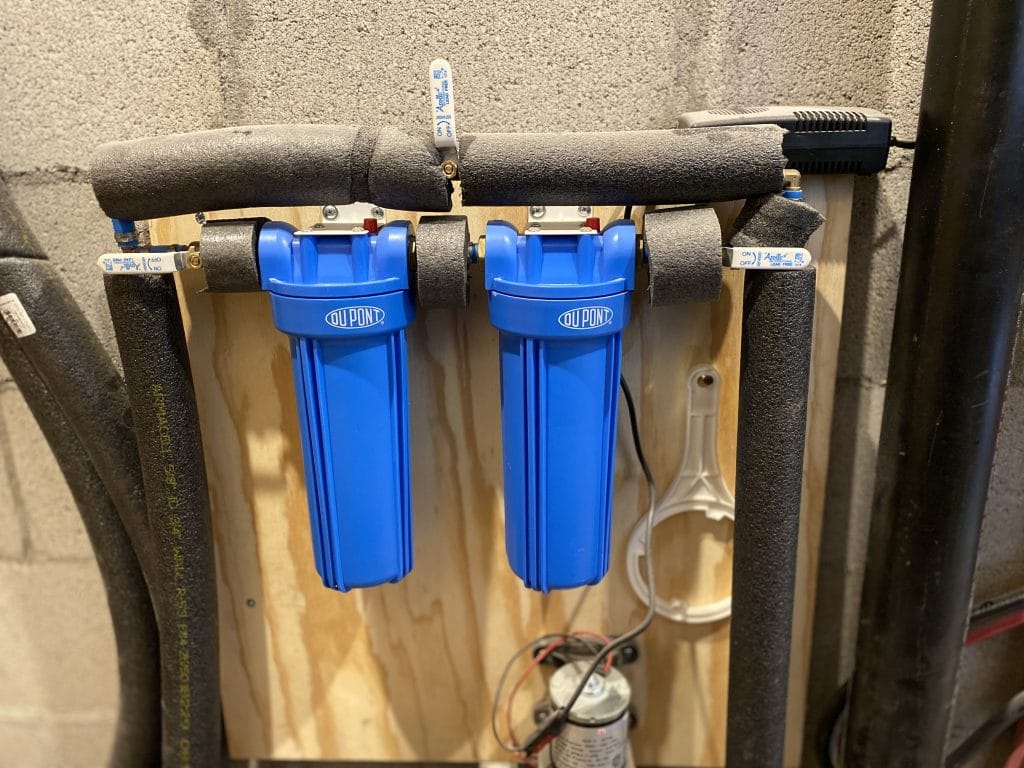
Through a series of PEX piping, the water is pumped up through a carbon filter as well as a whole-house filter before the water heads toward our sinks and shower.
We use a Berkey gravity-fed water filtration system (<– affiliate link) to filter our drinking water. To do this, we simply pour water from our sink into the top of the Berkey and drink from the water spigot at the bottom, which dispenses clean and drinkable water that tastes like…nothing!
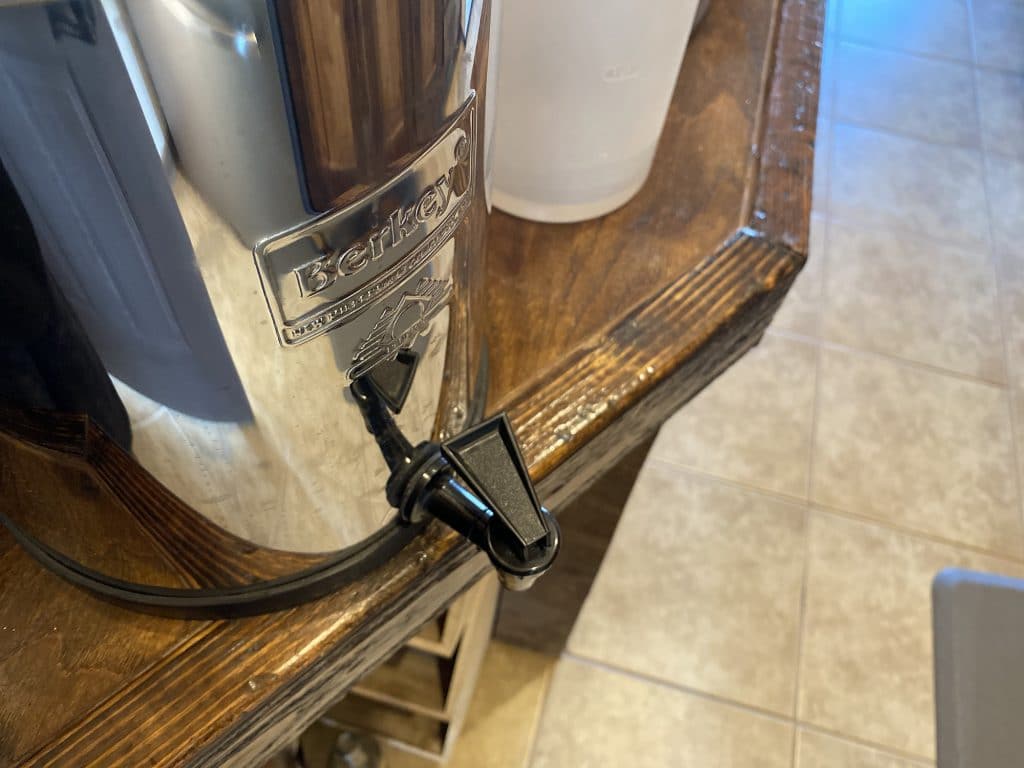
We’ve used this system for years now and feel extremely confident that the water we’re using is as clean as we can possibly make it.
My Office and Gym
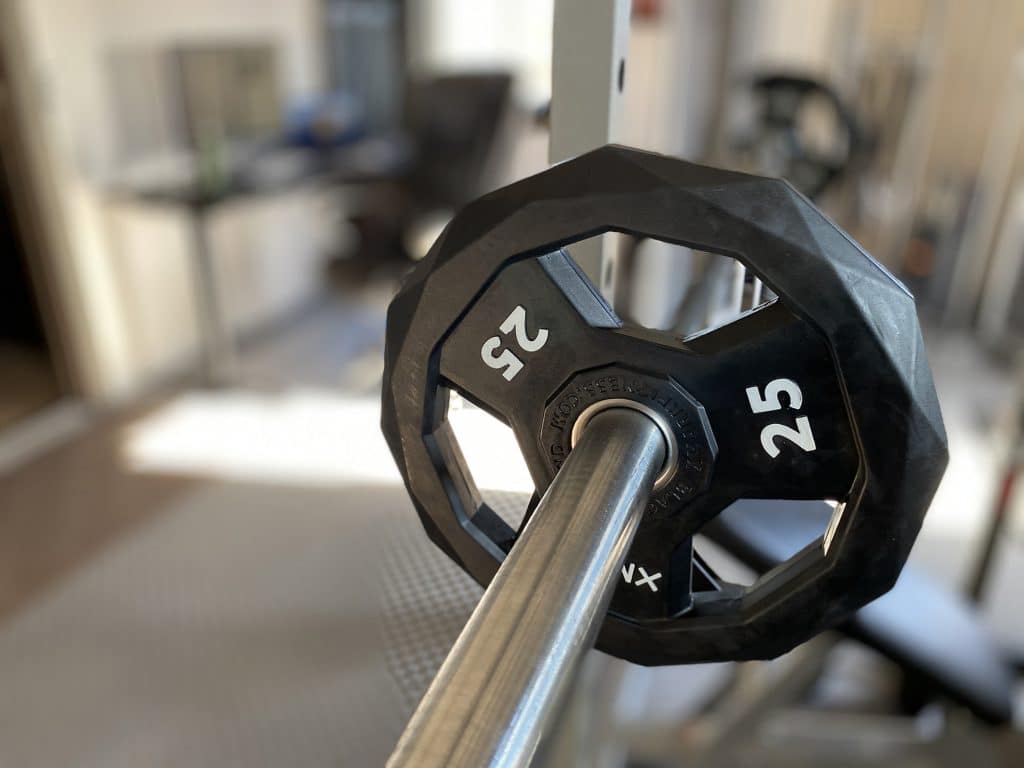
One of the reasons why I wanted this solar home was to build a proper office. A space that I can call my own without having to share it with the kitchen – as I did in the 200 square foot Airstream.
When we bought the house, it had an unfinished attached garage. Our plan was to renovate, insulate and turn the garage into both my office and gym. And, we did just that.
Here’s what the garage looked like when we bought it:
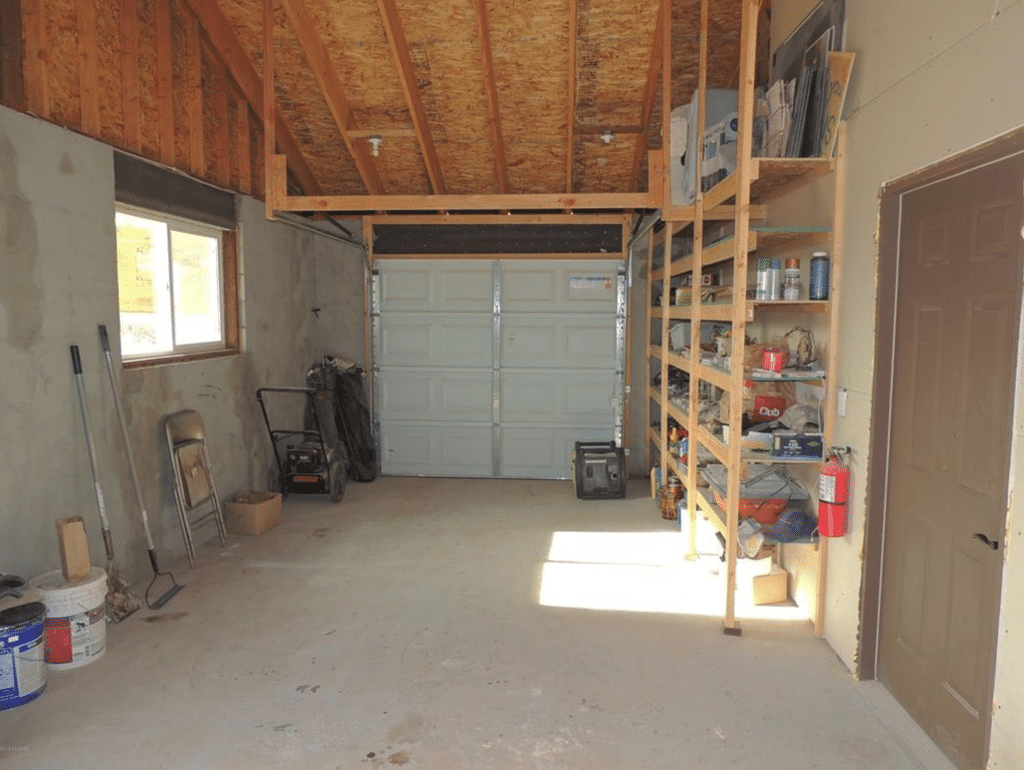
And, here is what it looks like now:

The gym equipment takes up the majority of the space, but I do have a nice area for my desk.

The renovation completely transformed the garage into one of the nicest office spaces that I’ve ever been in. And, the soft gym flooring makes walking around a real pleasure. Seriously!
Check out our video of our completed garage renovation.
What Is Next?
We are currently in the process of two major outdoor renovations to make our home and property even more livable:
- A covered metal patio that we can use for a dining table and other seating, extending our living space outdoors, and
- A graveled courtyard in front of the house, complete with a fire place, chaise lounges and other seating to enjoy with friends on one of Arizona’s many beautiful evenings
Our solar home is a work in progress and probably always will be. But, it’s a perfect little space to call home, and it allows us to live practically as cheaply as we need due to no utility hookups.
We live small, but we definitely think big.
